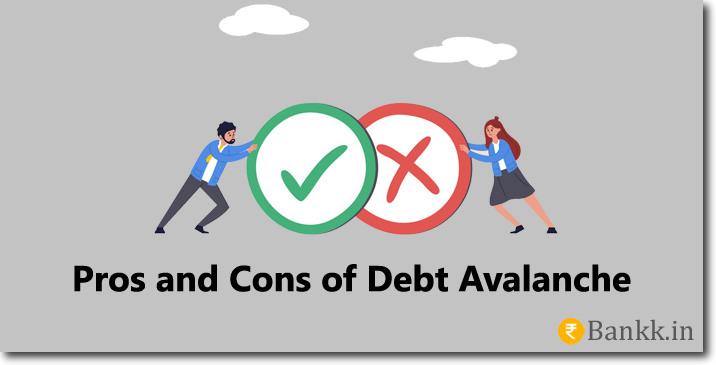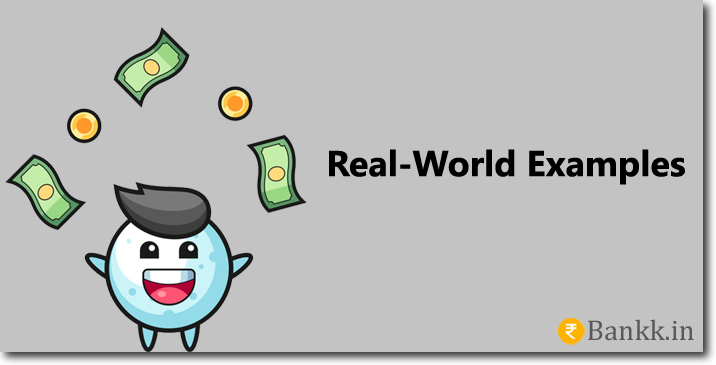Debt can often feel like a looming mountain, casting a shadow over your financial freedom. Whether it’s credit card debt, student loans, or other forms of borrowing, the burden of high-interest payments can hinder your ability to achieve your financial goals.
However, there’s a powerful strategy known as the Debt Avalanche method that can help you conquer your debts strategically and efficiently.
In this comprehensive guide, we’ll dive deep into the Debt Avalanche method, exploring its principles, benefits, step-by-step implementation, and real-world examples to illustrate its effectiveness.
Understanding the Debt Avalanche Method
The Debt Avalanche method is a debt repayment strategy that focuses on minimizing interest costs while prioritizing debt repayment.
The debt Snowball method is different, where it prioritizes paying off the smallest debts first, while the Debt Avalanche method focuses on the debts with the highest interest rates.
By tackling high-interest debts first, you can reduce the overall interest you’ll pay over time, potentially saving you a significant amount of money.
How Debt Avalance Method Works?
1. List Your Debts
Start by creating a list of all your debts. This should include everything from credit card balances, personal loans, and student loans, to any other forms of debt you have.
For instance:
- Credit Card Debt: ₹50,000 at 18% interest
- Student Loan: ₹100,000 at 8% interest
- Personal Loan: ₹30,000 at 12% interest
Having a clear and organized list is the foundation for effectively implementing the Debt Avalanche method.
2. Rank by Interest Rate
After listing your debts, arrange them in descending order based on their interest rates.
Here’s how it might look,
- Credit Card Debt: ₹50,000 at 18% interest
- Personal Loan: ₹30,000 at 12% interest
- Student Loan: ₹100,000 at 8% interest
This step is crucial as it identifies which debt is costing you the most in interest over time.
3. Allocate Extra Funds
Take any additional funds you have beyond the minimum payments and allocate them to the debt with the highest interest rate.
For example, if you have an extra ₹5,000 each month, you’d apply it to the credit card debt, like this:
Credit Card Debt: ₹50,000 (initial balance) – ₹5,000 (extra payment) = ₹45,000
By channeling extra funds towards the highest-interest debt, you’re actively reducing the interest you’ll end up paying.
4. Minimum Payments
Continue making the minimum payments on all other debts. Using our example, you’d continue making minimum payments on the personal loan and student loan while focusing your extra funds on the credit card debt.
5. Snowball Effect
As you pay off the debt with the highest interest rate, continue directing the total amount you were paying toward that debt to the next highest-interest debt.
Here’s how it might unfold:
Credit Card Debt: Paid off Personal Loan: ₹30,000 (initial balance) + ₹5,000 (extra payment from paid-off credit card debt) = ₹35,000 Student Loan: ₹100,000 (initial balance) + ₹5,000 (extra payment from paid-off credit card debt) = ₹105,000
The snowball effect gains momentum as you move through your debts, enabling you to pay them down more swiftly.
6. Repeat the Process
Once a debt is completely paid off, move on to the next highest-interest debt and repeat the process. Apply the extra funds you were using for the previous debt to the new one. This iterative approach continues until you’ve cleared all your debts.
By systematically following these steps, you’re optimizing your debt repayment strategy to reduce the impact of interest and hasten your journey toward financial freedom.
The Debt Avalanche method isn’t just about paying off debts; it’s about leveraging financial intelligence to take control of your financial destiny.
Pros and Cons of the Debt Avalanche Method
While the Debt Avalanche method offers significant advantages in terms of interest savings and accelerated debt repayment, it’s important to consider both sides of the coin.
Here, we’ll explore the pros and cons of this strategy to help you make an informed decision about whether it’s the right approach for you.
Pros:
- Interest Savings: The Debt Avalanche method’s primary strength lies in its ability to minimize interest costs. By targeting high-interest debts first, you reduce the overall amount of interest that accumulates over the life of your debts. This can result in substantial long-term savings and help you become debt-free faster.
- Financial Efficiency: This method is financially efficient as it focuses on tackling debts in an order that optimizes interest reduction. This approach aligns with the goal of managing your debts in the most cost-effective way possible.
- Motivation and Progress: Paying off debts with the highest interest rates can provide a psychological boost. As you see tangible progress with each debt you eliminate, you’re more likely to stay motivated and committed to the repayment journey.
- Long-Term Savings: By saving on interest payments, you free up more of your income for other financial goals, such as saving for retirement, building an emergency fund, or investing.
Cons:
- Delayed Gratification: While focusing on high-interest debts offers long-term financial benefits, it may require patience and discipline. You might not experience the same immediate satisfaction that comes from paying off smaller debts quickly, as seen in the Debt Snowball method.
- Complexity: Managing multiple debts with varying interest rates can be complex. It requires careful tracking of payments and balances to ensure you’re following the strategy correctly.
- Psychological Burden: For some individuals, the Debt Avalanche method might be emotionally challenging. Starting with the highest interest debt could mean dealing with larger balances initially, which might feel overwhelming.
- Interest Rate Variability: If you have debts with variable interest rates that might increase over time, the Debt Avalanche approach could expose you to higher costs in the future. It’s essential to factor in potential interest rate changes when considering this method.
Real-World Examples
Let’s explore two examples to illustrate the effectiveness of the Debt Avalanche method.
Example 1: Credit Card Debt
- Credit Card A: ₹20,000 balance at 18% interest
- Credit Card B: ₹15,000 balance at 24% interest
- Credit Card C: ₹10,000 balance at 15% interest
Using the Debt Avalanche method, you’d prioritize paying off Credit Card B first, then Credit Card A, and finally Credit Card C. This strategy would lead to significant interest savings compared to paying off the cards in a different order.
Example 2: Student Loans
- Student Loan X: ₹100,000 balance at 6% interest
- Student Loan Y: ₹50,000 balance at 8% interest
- Student Loan Z: ₹75,000 balance at 5% interest
By applying the Debt Avalanche method, you’d start by focusing on Student Loan Y, followed by Student Loan X, and then Student Loan Z. This approach would result in paying off the higher-interest loans faster and reducing the overall interest paid.
Conclusion
The Debt Avalanche method is a powerful strategy that empowers individuals to take control of their debts and make significant progress toward financial freedom. By prioritizing high-interest debts and using a systematic approach to repayment, you can save money on interest and accelerate your journey to becoming debt-free. Remember that discipline and consistency are key to successfully implementing this method. With dedication and careful planning, you can conquer your debts and pave the way for a brighter financial future.




